Description
Gate Electronics Video Lectures Free
GATE Electronics Video Lectures Free 2023
Looking for the ace study for your upcoming GATE Electronic exam in 2023 in the month of February, but you are unable to join any top coaching for better preparation. You may take the support of online video lectures. A good online video lecture gives you entire syllabus coverage with detail doubt clearance solutions, short-cut tricks, and one to one interaction with faculties.
Generally, if any aspirant is from distant places or for lack of appropriate budget can’t avail the facility of offline classes, then video lectures play a very key role in their final exam success. As the GATE Electronics exam 2023 is just near, many students are looking for the best coaching.
Among them, there are also many, to whom attending regular coaching is not possible. If they are taking then, due to the heavy batch sizes of the classroom, they can’t solve their doubts properly. For such students, we have brought our highly informative Video lecture series for the upcoming GATE Electronics Video Lectures 2023.
In our Video lecture series regarding GATE Electronics exam in 2023, we consist of many unmatched facilities that you hardly can get from any other’s video lecture:
Facilities of Our GATE Electronics Video Lectures Free 2023:
- The complete video lecture is for several hours. Every part covers a detailed, concept clarity based solution.
- To design the video, the faculties are very carefully chosen by testing their wide knowledge and expertise on this subject.
- This video lecture, every complex point is thoroughly discussed by the faculties by clear graphs, images, and charts.
- In this video lecture, every important and useful exam-related information on every topic is included for students’ ease.
- It is the design of our team of specialized faculties after a long R & D. We are very sure that after taking a study from our Online Khan market on the GATE Electronics video lecture, students will show their increased engagement more & more before the GATE Electronics exam in 2020.
- Learning from these video lectures will help aspirants showing confidence in the exam for cracking it at first attempt.
- This video lecture design is from the aspirants’ point of view. And as per their need in the upcoming GATE Electronics exam 2020. Every point is explained with detailed and useful information that will keep aspirants engage, interested and interactive.
- In this video lecture apart from detailed quality guidance of every topic, the information about GATE and many other important information is included.
- On your learning through the GATE Electronics video lecture from the Online khan market. Everything is in easy language and in detail yet if any aspirants feel any doubt during learning. To solve that they can directly take the help of its faculties through comments, post or through online interaction after the lecture.
Brief Description of GATE:
The long-form of GATE is the Graduate Aptitude Test in Engineering. It is an exam that gives MSC, M.E, M.Tech, MCA, B.E, B.Tech, and BCA aspirants an opportunity of getting selection in many reputed organizations, and private corporates through GATE exam qualifying scores. Every year, the exam is held at all India level. It gives an opportunity to aspirants for selection in many major organizations and corporates in India, and also in international organizations through direct recruitment procedures. It is an online CBT (Computer Based Test) paper runs for 3 hours duration.
Qualifying GATE exam offers aspirant a GATE Scorecard, which remains valid for 3 years for all the aspirants. The exam is held by these organizing institutes of IIT Bombay, Kharagpur, Delhi, Kanpur, Madras, Roorkee, IISc, and NIIT, etc. To attempt the GATE exam, aspirants can be of any age. On qualifying GATE, apart from getting direct recruitment, aspirants can keep their MSC, M.TEch, and M.E degree education continue with the Government’s financial aid every month.
Brief about GATE Electronics Exam:
The GATE Electronics exam in full is known as Electronics and Communication Engineering, a major stream in engineering. Qualifying this exam gives you entry for admission in many highly reputed engineering colleges of India for the degree level master programs like M.Tech, MSC, M.E, and direct Ph.D. program on Engineering and Technology. And apart from these, it also offers you a direct recruitment facility in many highly reputed Indian organizations like in BHEL, ONGC, BARC, Power Grid, GAIL, IOCL, etc. And also in international organizations like Amazon, Facebook, Google, etc.
The Syllabus Of GATE Electronics Exam That Is Included In Our Latest GATE Electronics Video Lectures 2023:
General Aptitude:
The part of quantitative aptitude includes almost every competitive exam paper. The main purpose of adding this section in any exam is to judge the aspirant’s logical, and conceptual ability. In the GATE Electronic exam, questions that come from this part are up to 15%.
Engineering Mathematics:
In every engineering exam, it is very compulsory part to attempt for any engineering students. As the GATE Electronics exam is also an engineering exam, in every GATE Electronics exam paper, this part includes the same 15% questions as general quantitative aptitude section.
Calculus:-
- Evaluation of definite and improper integrals.
- Multiple integrals, surface, line and volume integrals.
- Partial derivatives.
- Maxima and minima.
- Rank Solution of Linear Equation.
- Taylor Series.
- The theorem of integral calculus.
Vector Analysis:
- Vector operations
- Gradient, Divergence, and Curl.
- Vectors in space and in Plane.
- Gauss’s, Green’s and Stoke’s theorems.
Numerical Methods:
- Single and multi-step methods for differential equations.
- The solution of nonlinear equations.
- convergence criteria.
Linear Algebra:-
- Eigen values and Eigen vectors.
- Vector basis, space, linear dependence and independence.
- Matrix algebra.
- Rank, and solution of linear equations −
- Existence and uniqueness.
Probability and Statistics:-
- Combinatorial probability.
- Mean, median, mode and standard deviation.
probability distribution functions −
- Exponential.
- Exponential.
- Normal.
- Binomial.
- Correlation and regression analysis.
- Joint and conditional probability.
Continuous-time signals:-
- Fourier series and Fourier transform representations, and sampling theorem and applications.
LTI systems −
- Causality.
- Impulse response.
- Parallel and cascade structure.
- Group delay.
- Digital filter design techniques.
- Phase delay.
- Stability
- Definition and properties of LTI System.
- Frequency response.
- Convolution.
- Poles and Zeros.
Differential Equations:-
- First-order equations (linear and nonlinear)
- Higher-order linear differential equations
- Cauchy’s and Euler’s equations
- Partial differential equations
- Methods of solution using a variety of parameters
- Variable separable method, initial and boundary value problems
- Complementary function and particular integral
Digital Electronics: It is a branch of electronics, related to a logic circuit that opens and closes according to the presence of an electronic pulse. This part is also quite compulsory like Engineering Mathematics. In the GATE Electronics paper, this section includes up to 44 questions out of complete 65 questions of GATE papers. The chapters it consists of are:
- Number System.
- Logic Families.
- Algebra.
- Flip Flops.
- Logic Families.
- Analog to Digital and Digital to Analog.
- Shift Resistor.
- Binary Codes.
- Logic gates.
- Minimization Techniques.
- Boolean Algebra.
- Display Device & Systems.
- Counters.
- Combinational Circuits.
- Floating Points Representation.
- Number System & Base Conversion, etc.
GATE Electronics Notes PDF
Signal & System
- Various types of signals.
- Their processing, and analysis.
- Linear Time-Invariant System.
- Application of Fourier Transform.
- Fourier Series.
- Z-Transform, Sampling Theorem.
- Laplace Transform.
- DFT and FFT.
- Shifting and Scaling Operation.
- Digital Filter Design.
- Continuous & Discrete-Time Signals etc.
- In the GATE Electronics exam, questions come from this section are around 25 in number.
Networks:
- Network Analysis Techniques.
- Transient Response.
- Steady-State Sinusoidal Response.
- Network Graphs, Network Theorem and Transformation.
- Filters AC and DC Circuits.
- Basic Electrical Engineering.
- Network Equations.and Solution Methods.
- Steady-State Equations and Analysis.
- Two-Port Network.
- Time Domain.
- And Frequency Analysis of Linear Circuits, etc.
Important study notes of the network:-
Network Analysis Techniques:
This section consists of notes about in Network Elements and Theorem parts:-
- Signals and Waveforms of step.
- Ramp, impulse functions.
- Independent and dependent sources.
- Mesh and nodal analysis of networks.
- Reciprocity.
- Superposition.
- Miller’s.
- Mesh and Nodal Analysis of networks.
- Maximum power transfer theorems, etc.
In Domain Analysis:-
- Laplace transform of shifted functions.
- Time and Frequency Domain
- Convolution Theorem.
- Representation of basic circuits in terms of generalized freq & their response.
- Time-domain behaviors of poles and zeros, etc.
In Synthesis of the network:-
- Network Synthesis Techniques for 2-Terminal Network
- Stability Condition for Impedance Synthesis of RC & RL Circuits.
- First and Second Forms of Foster and Cauer Forms.
- Routh-Hurwitz Criterion, etc.
in Filter-T-Section:-
- Pass Band and Stop Bands
- m-Derived Filters
- Basic and Classification of Filters
- Characteristics Impedance & Propagation Constant of Pure Reactive Network.
- Ladder Network.
- Design of Constant-K.
- Composite Filter.
- Properties of LC and RC.
Positive Real Function:-
- Definition and Properties.
- Image Parameters and also Characteristics Impedance.
- Passive and Active Filter Fundamentals.
In initial condition In Networks:-
- Procedure For Evaluating Condition of Network.
- Initial Conditions in Elements of Networks.
- Network Theorem- Application to AC Network.
- Applying Method of Node & Mesh Circuit Analysis Techniques And Different Network Theorem like Norton & Superposition, Thevenin, and Reciprocity.
- Reciprocity Theorem,
- Millman’s Theorem.
- Compensation Theorem.
- Tellegen’s Theorem.
- Loop Analysis.
- Nodal Analysis.
- Mesh Analysis.
- Y – D and D- Y Transformation.
- Bridge Circuits.
- DC Circuits.
- Series of Parallel Circuits.
- Kirchhoff’s Voltage and Current Law.
- Maximum Power Transfer Theorem, etc.
In Transient Response:-
First in Transient and Steady State-
- The Introduction of Transient and Steady-State
- Condition of an Electrical Network.
- Switching Phenomenon With Two Fundamental Laws.
In Second DC Source Connected:-
- The Introduction, Behavior.
- And Response of The RL Circuit under the Influence of DC Excitation.
In the Third DC Source Connected Chapter:-
- The Introduction, Behavior, and Response of the RC Circuit under the Influence of DC Excitation.
In Fourth RL & RC Circuit Under Impulse Excitation:-
- The Behavior & Response of RL and RC Circuit with the Influence of impulse Excitation.
In RLC Series Circuit under DC Excitation:-
- RLC Series Circuit under the Influence of a DC Excitation.
- In RLC Parallel Circuit under DC Excitation.
- The State and behavior of RLC Series Circuit under the Influence of a DC Excitation.
In RLC parallel Circuit under DC Excitation:-
- The Behavior and Response of RLC Parallel Circuit under the influence of a DC Excitation.
In RC Circuit under AC Excitation:-
- Everything about the RC Circuit under the Influence of DC Excitation,
In RL Circuit Under AC Excitation:-
- The introduction, Behavior, and Response of RL Circuit with the Influence of AC excitation.
In the lesson of RL Circuit Problem under AC Excitation:-
- Some Mathematical Problem and Their Solution on RL Circuit with the Influence of AC Excitation.
In the problem of RC Circuit under the influence of AC Excitation:-
- The solution of RC Circuit with the Influence of AC Excitation through various mathematical techniques.
In the Introduction of Laplace Transform-
- The Introduction of Laplace Transform and the process of dealing with Transient Problem using various effective mathematical Tools.
In the Laplace Transform in Transient Analysis:-
- The Process of Solving and Dealing with Transient Problem using Laplace Transform Method in place of Classical Approach,
In the next chapter on RLC Circuit under AC Excitation:-
- Short-Trick based Mathematical Tricks and Solutions for the Mathematical Problem on the RLC Circuit under AC Excitation,
In the Problem of RL Circuit, RC Circuit and RLC Circuit under DC Excitation:-
- The mathematical tricks and solution for the mathematical problems of RL, RC, and RLC Circuit under the influence of DC Excitation.
- And along with the practicing sets of Paper-I, II, III, and IV, etc.
Steady-State Sinusoidal Response: This section includes notes from the following chapters:
Basic Network Theory Concept Chapter:-
- Types and Properties of Metrics, Rank of a Metrics,.
- Elgen Values & Elgen Vectors.
- The solution of a System of Linear Equations, and Linear Algebra Revision Test-1.
- The Basics of Network Theory and its Application with Solved Examples.
In the Second Chapter of Source Transformation & Reciprocity Theorem:-
- The studies material about the transformation process of different Voltages (or Current) Sources into a Single Voltage (or Current) Sources
- Entire detailed analysis of voltage source into Current Source and Vice-Versa, etc.
KCL and KVL in Electrical Networks:-
- The relationship between Kirchoff Voltage Law and Kirchhoff Current Law.
- About the Simple Relationship between Current and Voltages of Different Branches of an Electrical Circuit.
- The Signs Conventions for Kirchhoff Current and Voltage Laws.and about DC Circuit Theory Terms.
Kirchhoff’s Laws, Nodes and Mesh Analysis:-
- The Introduction about the Kirchhoff’s Laws, Node and Mesh.
- Analysis, the First Kirchhoff’s Law deals with the Flow of Current is also known as Kirchhoff’s Current Law.
- The Second Kirchhoff’s Law deals with Voltage Drop in a Closed Network is popular by the name Kirchhoff’s Voltage Law.
- Basic and working process of the Nodal, Mesh, Super Node, and Super Mesh Analysis, very compulsory part for the Electrical Network and Network Elements
Voltage Division in Series Circuit:-
- Applying Process of Voltage Division and Current Division.
- Complete important information of KCL, KVL.
- Nodal and Mesh Analysis.
Voltage to Current Division, Star to Delta Conversion:-
- The Basic of the Voltage to Current Division.
- About the Star to Delta Conversion.
- The Voltage and Current Division and the process of applying them.
- KCL and KVL and about Nodal and Mesh Analysis, etc.
Maximum Power Transfer Theorem-
- The introduction and basic about the Maximum Power Transfer Theorem and other Theorems like Thevenin’s Theorem, Reciprocity Theorem, and Tellegen’s Theorem, their concepts, and analysis, etc.
In Thevenin Norton Equivalencies:-
- The introduction and a detailed explanation about Thevenin Norton Equivalencies.
- The two important valid methods of Thevenin’s and Norton’s Theorems for reducing a complex network down to something simpler to analysis.
- These methods are very simple to simplify complex networks and in saving a great amount of time.
- Free GATE practicing sets and study notes to deal with Thevenin Norton Equivalencies in Circuits with independent Circuit only and with dependent sources and circuits with both independent and dependent sources, etc.
In-Network Transient-1:-
- The basic network theory concept.
- Source Transformation.
- Reciprocity Theorem.
- And Voltage Division.
Network Graphs:-
Network Theorem and Transformation: its study notes:
- Millman’s Theorem.
- Reciprocity Theorem.
- Substitution Theorem & Stardelta Transformation.
- Tellegen’s Theorem.
- Application of Tellegen’s Theorem.
- Network Theorem & Transformation, etc.
Filter AC and DC Circuits:-
- This section gives you the notes of Filter Circuits.
- Application of Filters.
- Filter Circuit-2.
- Magnetic Circuit.
- Notes about the Low-Pass Filters.
- Band-Pass Filters.
- High-Pass Filters, etc.
Basic Electrical Engineering:-
- In this section, the notes are available on KCL and KVL Law.
- The introduction of Electronic Circuits or Networks,.
- Charges, Current.
- Power & Energy.
- Voltage.
- The classification of Networks.
- Circuit Elements.
- Capacitor.
- Gyrator.Transformer
5 types of Energy Sources-Ideal Voltage Source:
- Ideal Current Source, Practical Voltage
- Source, Practical Current Source, Independent Source.
- Limitation of Ohm’s Law.
- Kirchhoff’s Current Law.
- Kirchoff’s Voltage Law.
In the Ideal Current and Voltage Source note’s about Independent Source.
- Ideal Voltage Source.
- Voltage Source Series.
- Voltage Source in Parallel.
- Current Source in Parallel.
- Current Source in Series, etc.
Network Equations and Solutions Method:-
Its study notes cover topics like in Network Equation Using Laplace Transform:-
- The introduction of Laplace Transform and everything you need to know about Laplace for the upcoming GATE Electronics Exam in 2020.
- And in Network Equation and Solution Method the notes of KVL, Nodal Analysis, Nodal Analysis with Super Node and Mesh Analysis.
- Mesh Analysis with Super Mesh, etc.
Steady-State Equations and Analysis:-
- Its study notes cover the Response of the First Order System.
- The response of the Second Order System,
- And Steady-State Error, etc.
Two Port Network:-
- Z-parameter or Open Circuit Impendence Parameters.
- T-parameter or ABCD parameters.
- Transmission parameters.
- Y-parameter or Short Circuit Admittance Parameters.
- g-parameter or Inverse hybrid parameters.
- Interrelationship of different types of parameters, series, Cascade Connection, and parallel.
- H-parameter or hybrid parameters
Time Domain and Frequency Analysis of Linear Circuits:-
- Its study notes consist of the basic or the introduction of the Time Domain and Frequency Domain.
- Transient Responses.
- Transient Analysis of Different Circuits.
- And Parallel and Series Resonance, etc.
Electronic Devices and Circuits:-
- Generation and recombination of Carriers.
- P-N Junction, MOS Capacitor, Zener in Diode, Photo Diode, Soler Cell, MOSFET, and BJT, etc.
- Poisson and Continuity Equation.
- Energy Bands In Intrinsic and Extrinsic Silicon.
Integrated Circuit Fabrication Process:-
- Diffusion.
- Oxidation.
- Photolithography.
- Twin-tub CMOS process.
- Ion implantation.
Carrier transport: −
- Drift current.
- Resistivity.
- Diffusion current.
- Mobility.
Digital Circuit:-
- Number System:-
- And in Combination Circuit:
- Arithmetic circuits.
- Multiplexers.
- Minimization of functions with Boolean identities and Karnaugh map.
- Boolean algebra.
- Logic gates and their static CMOS implementations.
- Decoders and PLAS.
Sequential circuits:-
- Shift-registers.
- Finite state machines.
- Latches and flip-flops.
- And Counters.
Semiconductor memories −
- SRAM.
- DRAM.
- ROM.
Data converters −
- ADCs and DACs.
- Sample and hold circuits.
The 8-bit microprocessor (8085):-
- Programming.
- Architecture.
- Memory & I/O Interfacing.
Control System:-
- Block diagram representation.
- Basic control system components.
- Transient and steady-state analysis of LTI systems.
- Bode and root-locus plots.
- State variable model and solution of state equation of LTI systems.
- Frequency response.
- Transfer function.
- Feedback principle.
- Lag, lead and lag-lead compensation.
- Routh-Hurwitz and Nyquist stability criteria.
- State variable model and solution of state equation of LTI systems.
- Signal flow graph etc..
Communication:-
Random processes −
- Properties of white noise
- Autocorrelation and Power Spectral Density.
- The filter of Random Signals Through LTI System.
Information theory: −
- Mutual information.
- Channel capacity theorem.
- Entropy.
Analog communications: −
- Angle modulation and demodulation.
- Spectra of AM and FM.
- Circuits for analog communications.
- Amplitude modulation and demodulation.
- Superheterodyne receivers.
Digital communications −
- Phase and frequency shift keying (ASK, FSK, and PSK,), QAM, ML, and MAP decoding.
- Digital modulation schemes.
- DPCM.
- PCM.
- SNR and BER for digital modulation.
- Matched filter receiver.
- Calculation of bandwidth.
- Amplitude.
- Timing and Frequency synchronization, and inter-symbol interference and its mitigation.
- Basics of TDMA, FDMA, and CDMA.
- Fundamentals of error correction, Hamming codes.
Electromagnetics
Electrostatics and Maxwell’s equations:
- Wave equation.
- Differential and integral forms and their interpretation.
- Poynting vector.
- Boundary conditions.
Transmission lines −
- Impedance transformation.
- Characteristic impedance.
- S-parameters.
- Equations.
- Impedance matching.
- Smith chart.
Antennas −
- Radiation pattern.
- Gain and directivity.
- Antenna arrays.
- Antenna types.
- Return loss.
- Basics of radar Light propagation in optical fibers.
Plane waves and properties −
- Polarization.
- Propagation through various media.
- Reflection and refraction.
- Phase and group velocity.
- Skin depth.
Waveguides −
- Cut-off frequencies.
- Boundary conditions.
- Modes.
- Dispersion relations.
- Polarization
- Maxwell’s equations.
- S-parameters.
- Antennas.
- Antenna types.
- Light propagation in optical fibers.
- Differential and integral forms and their interpretation.
- Wave equation.
- Impedance matching.
- Gain and directivity.
- Plane waves and properties.
- Impedance transformation.
- Antenna types.
- Phase and group velocity.
- Electrostatics etc.
In this blog page about the GATE Electronics Free Video Lectures 2021, we have included every compulsory chapter of the GATE Electronics exam 2023. When it comes about better preparation, Video lecture is considered the most useful tool. For the convenience of low budget or poor students, it is kept free of cost. So, avail the facility and lead your step to success with our GATE Electronics Free Video Lectures 2023.
UPSC Coaching Insititute In Delhi
UPSC Coaching Insititute In Hyderabad
UPSC Coaching Insititute Bangalore
IAS Coaching Insititute Of Kolkata
Contact Information
For inquiry and talk you can go along with us our what’s app gather such a large number of understudies are as of now gone along with us you can like wise join at 9354925302 and visit our site Examophobia
For soft copy data about UPSC,IPS,IAS, Study material our official unravel your inquiries with neighborliness so understudies call us 9354925302 and visit our site Onlinekhanmarket








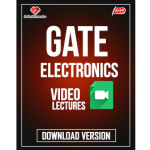

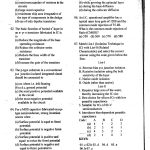
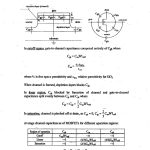
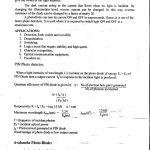
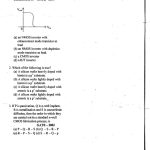
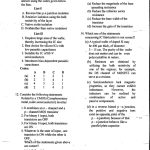
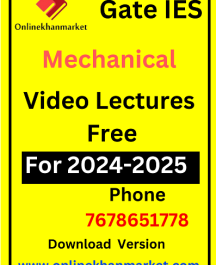
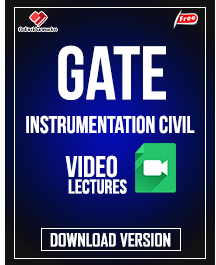
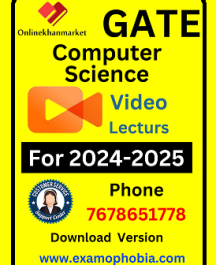
Reviews
There are no reviews yet.